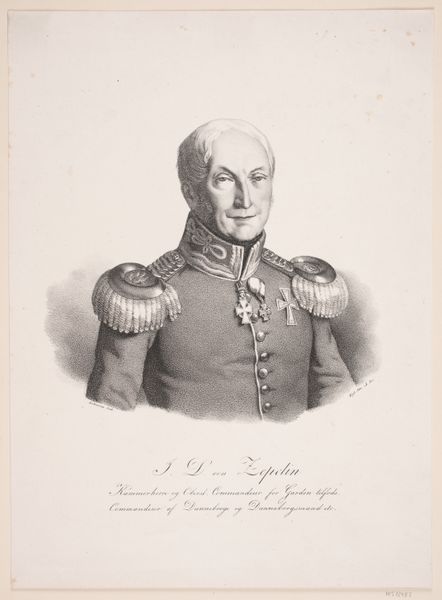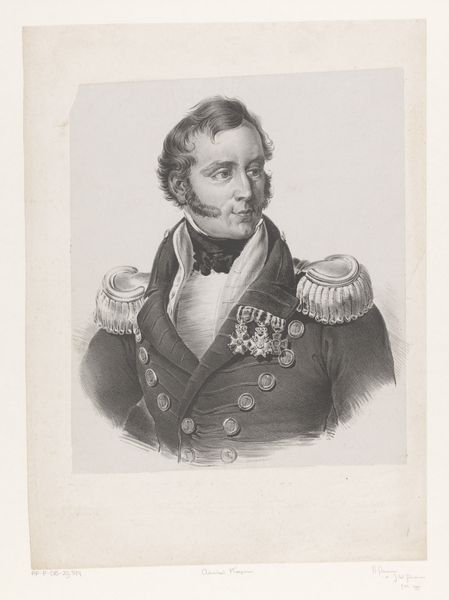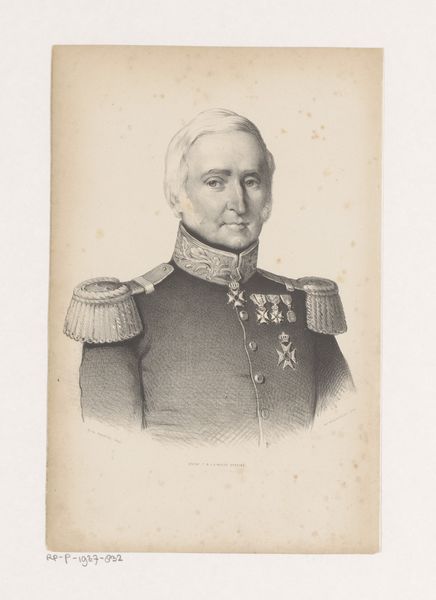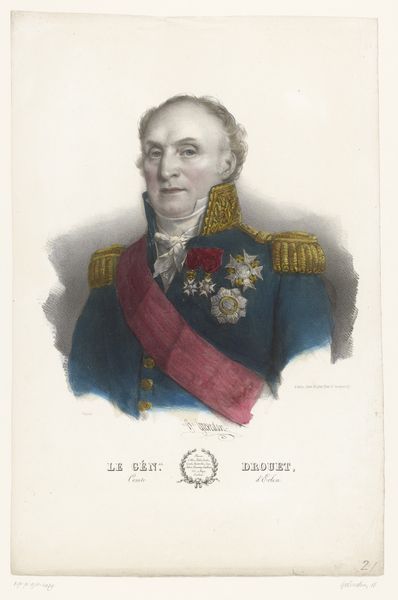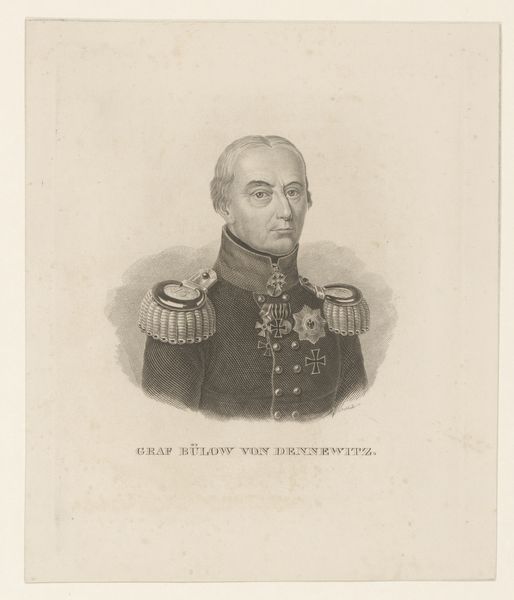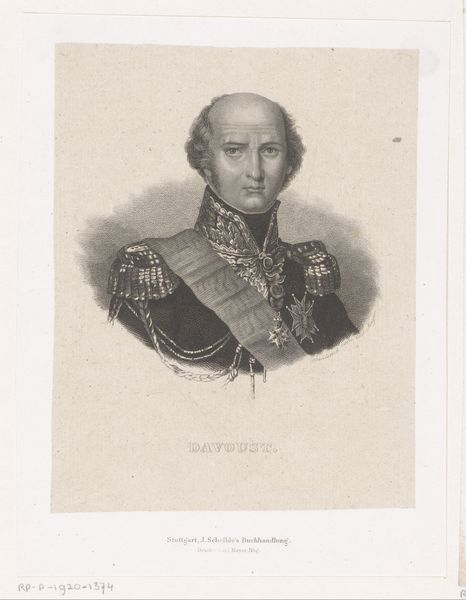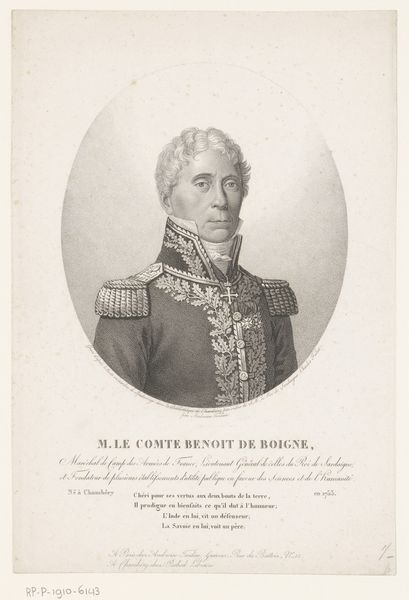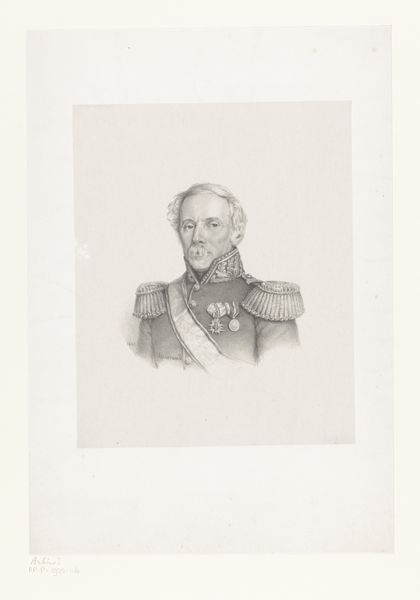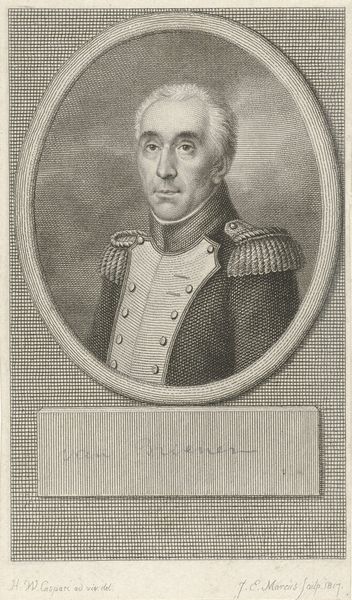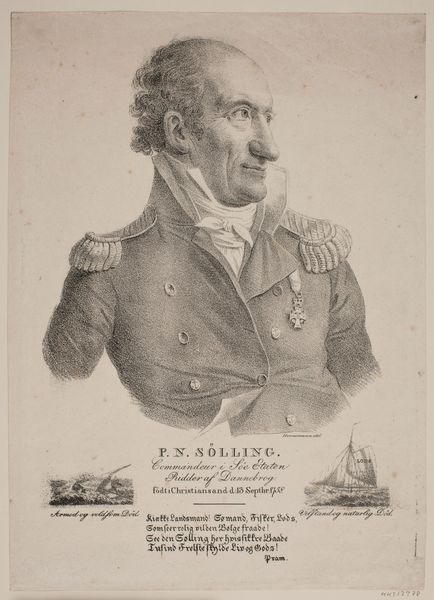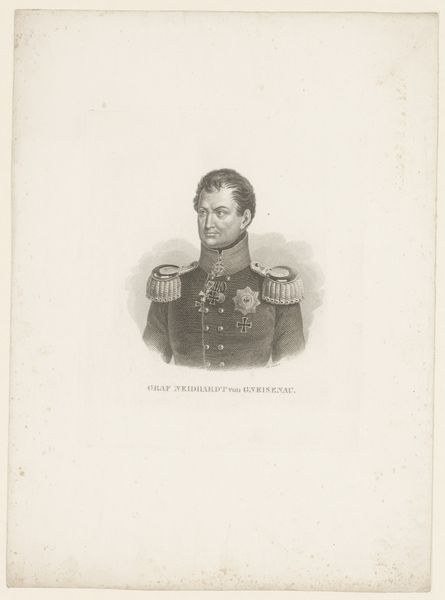
lithograph, print
#
portrait
#
lithograph
# print
#
19th century
#
portrait drawing
Dimensions: 293 mm (height) x 250 mm (width) (bladmaal)
Curator: Here we have a lithograph print from the 19th century, “Seen Andersen Bille,” made sometime between 1834 and 1866, now housed at the SMK, Statens Museum for Kunst. Editor: The man is formidable. It's a portrait of authority and, dare I say, a touch of melancholy? You can practically feel the weight of duty etched into his face. Curator: Absolutely. Lithography allowed for a wider dissemination of images, like this portrait. Think about the workshops, the specific stones they would have used, and the skilled labor required to produce these prints on a mass scale. The infrastructure was pretty involved. Editor: And think of what he represents, beyond just an individual. The naval officer’s portrait carries the weight of Danish maritime power, especially during a period of shifting geopolitical currents. This image probably shaped public perceptions of military leaders and Denmark's role in global conflicts. What's conveyed by those ships fading into the background, almost as though receding from the future, or receding from this particular moment in history? Curator: Exactly. And looking at the materials, lithographic stones were prized for their fine grain, offering a relatively efficient means to replicate images for different markets, connecting artistic production with consumerism. Editor: It prompts us to ask: who was this man beyond his rank? What socio-economic background shaped his worldview? Were there intersectional dimensions, of gender and race that impacted his path? I'm curious about the untold stories surrounding him. Curator: We need to consider not only his role, but also the printmakers role, how this process impacted their class, production, and even the economic drivers behind its distribution. How was this labor compensated? These factors are essential to a comprehensive reading. Editor: His medals signify status, power. In a different sociopolitical reality, they could easily read as instruments of oppression, given histories of imperialism. Who benefited and who suffered from his accomplishments? Curator: Seeing his world framed through material output encourages one to re-evaluate social value itself. Editor: Indeed. His gaze, the receding ships... there's more than meets the eye regarding how we, even now, interpret those historical intersections.
Comments
No comments
Be the first to comment and join the conversation on the ultimate creative platform.
